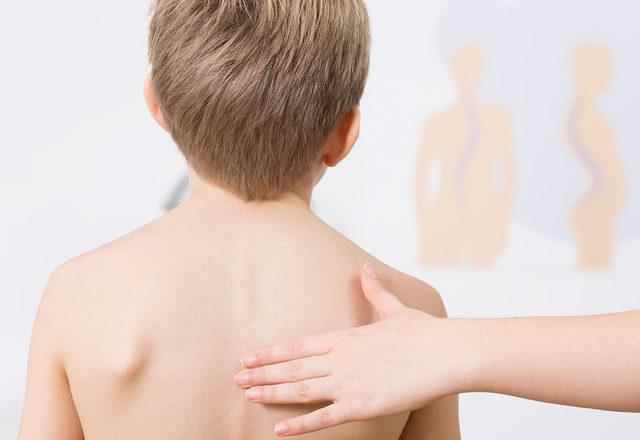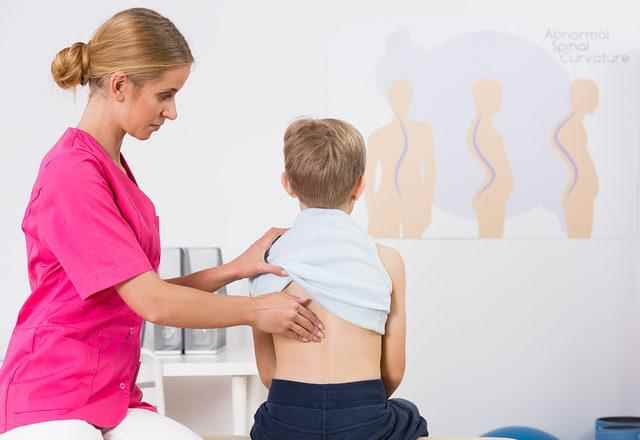Scoliosis is the curvature of the spine that maintains our posture. Scoliosis is seen in 3 out of every 100 children. Early diagnosis is very important to combat scoliosis disease. Orthopedics and Traumatology Specialist Op. Dr. Bertan Cengiz said, “Especially girls are seen 8-10 times more often than boys.” Dr. Cengiz recommended that families pay attention to symptoms such as “asymmetry in the shoulder blades, curvature of the shoulder, curvature in the pelvis, asymmetry between the muscles in the back or front or in the rib cage”.
THE CAUSE OF SCOLIOSIS IS GENERALLY UNKNOWN
Saying that scoliosis has certain causes, but mostly the cause is unknown, Orthopedics and Traumatology Specialist Op. Dr. Bertan Cengiz, “Scoliosis is a 3-dimensional deformity of the spine, namely curvature. This is a deformity that can also occur when the spine twists within itself, which we call curvature to the right or left, or to the front and back. The majority of scoliosis is the type of scoliosis we call idiopathic. There are also types of scoliosis, which we call neuromuscular, due to congenital congenital or some muscle diseases, but the cause of the majority of them is unknown.
THE RATE OF SEEN IN GIRLS IS 8-10 TIMES MORE
Stating that the rate of scoliosis is 8-10 times higher in girls than in boys, Cengiz said, “Studies show that the incidence of scoliosis in our country is around 3 percent. In other words, 3 out of every 100 children have a risk of developing scoliosis. Scoliosis is 8 to 10 times more common in girls than boys. Especially girls who have not started menstruation before the first 5 years of age and puberty are in the risky group.
SCOLIOSIS DISORDERS ARE DETECTED WHEN LOOKING BARE

Bertan Cengiz said that the symptoms of scoliosis are poor posture in children or asymmetry in the shoulder blades that families can notice especially when they look naked, shoulder curvature, curvature in the pelvis, asymmetry between the muscles when viewed from the back or front, on the right or left side of the rib cage, compared to the other. He said there might be a difference.
IT MAY BE SCOLIOSIS IF THE SPINE HAS A CURVE LIKE S
Emphasizing the importance of observing their children naked from the waist down for early diagnosis, Op. Dr. Bertan Cengiz said, “Stay back so that you can see your child’s back. Ask your child to stand up straight. Then ask your child to half bend towards their knees. If you notice an S-like curvature in your spine, which should be straight, you may have scoliosis. But don’t worry, you should be afraid of being late, not from scoliosis. As in all diseases, early diagnosis is very important here, too.
IF SYMPTOMS CONSULT THE DOCTOR AS SOON AS POSSIBLE

Underlining that families should consult an orthopedic and traumatology physician as soon as possible if they see symptoms, Dr. Cengiz said, “After a detailed examination, the orthopedic doctor will take an X-ray of the entire spine. Here, if there is scoliosis, the curvature is calculated. If the curvature of the spine is less than 10 degrees, we call it asymmetry, not scoliosis. Curvatures above 10 degrees are called scoliosis, and curvatures between 10-20 degrees are only followed. This should be followed closely because the degree of curvature may increase as the child grows. For curvatures greater than 20 degrees, bracing or physiotherapy techniques come into play. In scoliosis over 40 degrees, surgical treatment may be required most of the time. Bertan Cengiz added that if scoliosis is diagnosed early and treated quickly, the patient may not need surgical intervention and other treatment methods in the future.
